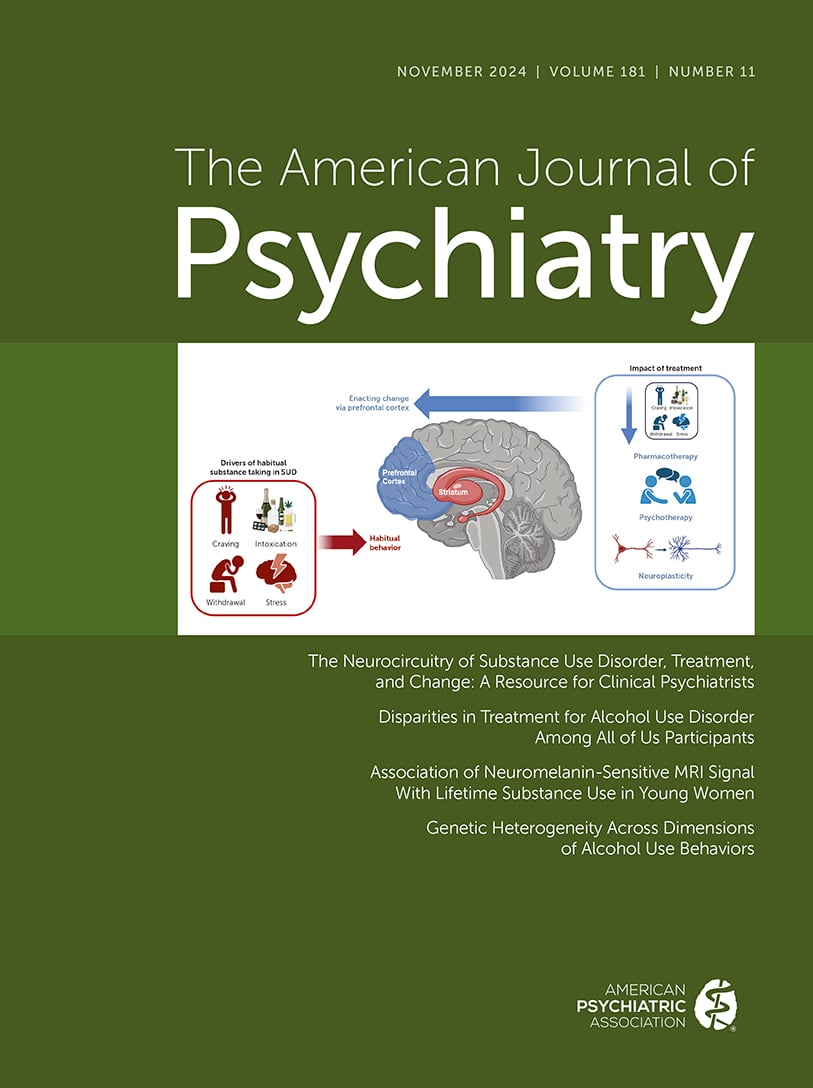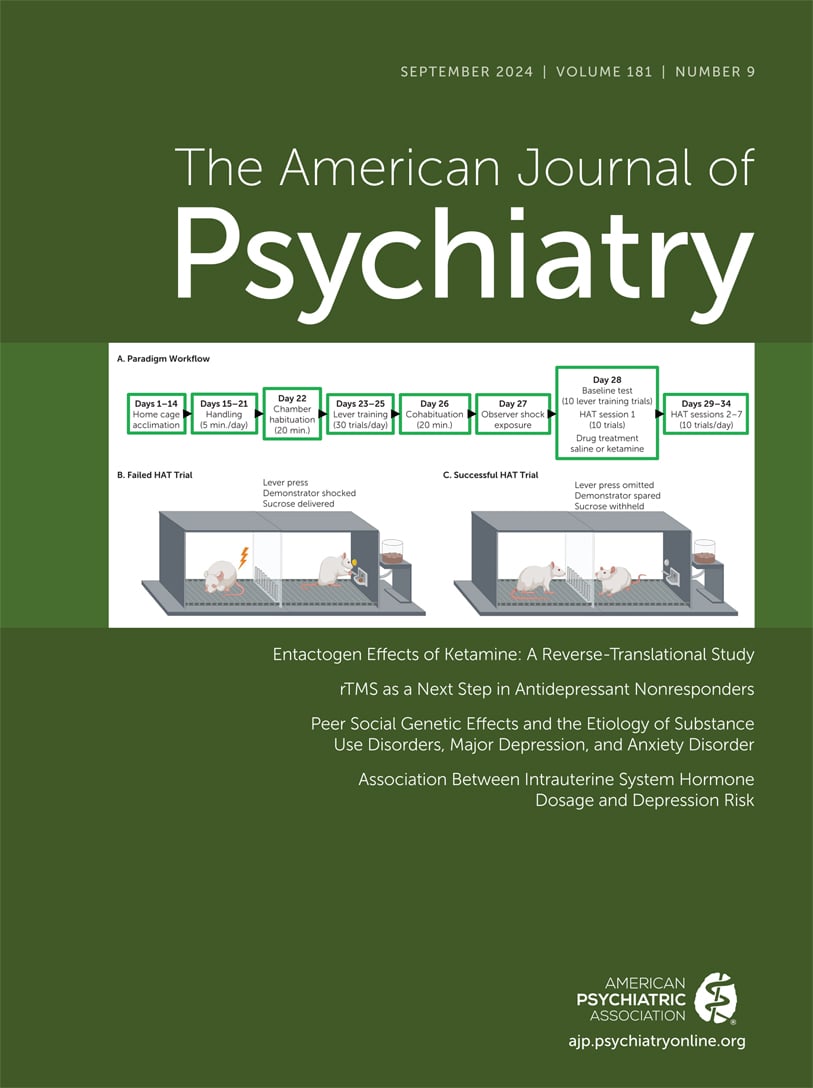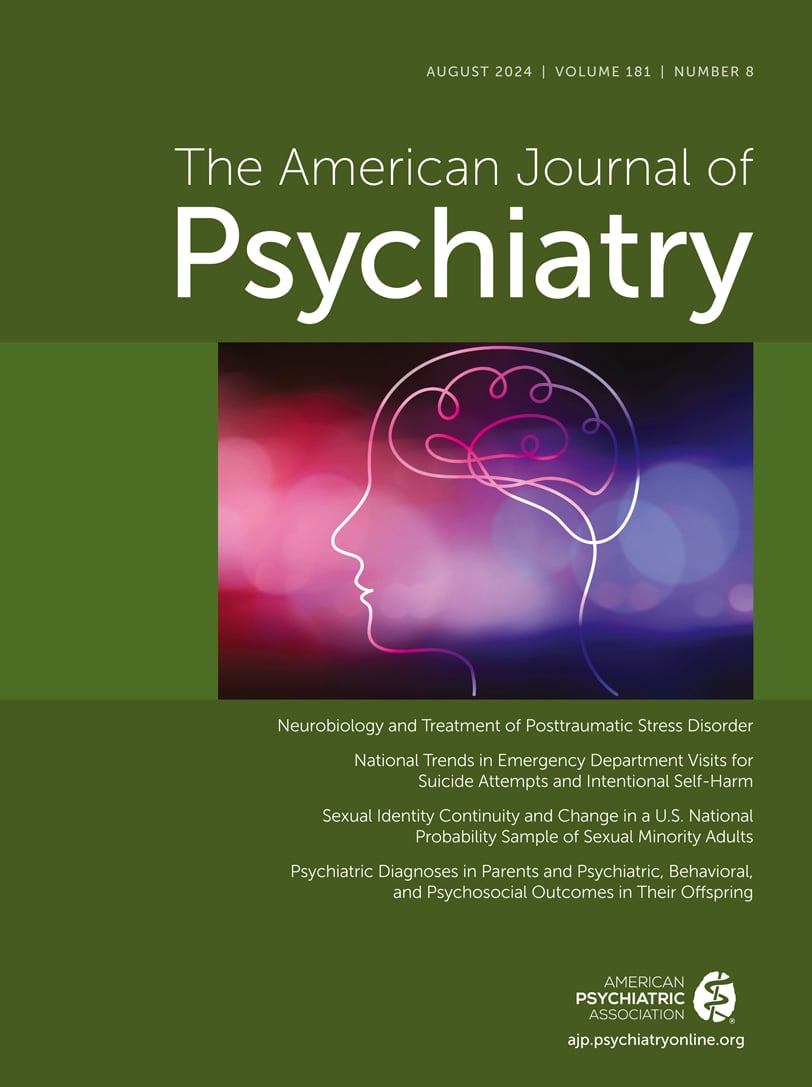American Journal of Psychiatry
- Volume 124
- Number 4S
- October 1967
Article
Publication date: 01 October 1967
Pages1–7In this progress report on the community mental health centers program, the Director of the National Institute of Mental Health reviews existing patterns of support, community organization, staffing, and practice in the 256 centers funded during the past ...
https://doi.org/10.1176/ajp.124.4S.1Publication date: 01 October 1967
Pages8–13Community mental health has sturdy empirical bases in past public health experience and current health needs. Its application should be both controversial and highly rewarding in contributing to knowledge of social dynamics. An adaptation of general ...
https://doi.org/10.1176/ajp.124.4S.8Publication date: 01 October 1967
Pages14–20Adult psychiatric clinics are frequently inefficient in the utilization of personnel. The "team" approach is of little value to the psychiatrist treating a patient; it is rarely used in private practice. Clinic growth spells diminished help to the ...
https://doi.org/10.1176/ajp.124.4S.14Publication date: 01 October 1967
Pages20–29The nation's investment in community mental health requires not only that significant numbers of specialists be trained but also that all mental health professionals acquire some basic skills in the theory and method of this field. The authors describe ...
https://doi.org/10.1176/ajp.124.4S.20Publication date: 01 October 1967
Pages29–31A geographic unit in a large state hospital began a community-oriented program without significant increases in money or personnel. This was done by the alteration of many of the traditional staff functions and concentration on a patient-centered program. ...
https://doi.org/10.1176/ajp.124.4S.29Publication date: 01 October 1967
Pages32–37The community mental health center model with its varied direct clinical services becomes a white elephant when applied to rural states and areas. The model does not fulfill the mental health needs of the people—of meeting them where they live and serving ...
https://doi.org/10.1176/ajp.124.4S.32Publication date: 01 October 1967
Pages37–45After reviewing emergency services in general hospitals, the authors conclude that only a few of them have innovative, community-oriented emergency programs; most seem to follow traditional practices. The authors suggest that we recognize that large ...
https://doi.org/10.1176/ajp.124.4S.37Publication date: 01 October 1967
Pages46–57From the point of view of community mental health, the critical aspect of the acute psychiatric admission to a general hospital service lies in the opportunity to establish a needed treatment relationship during the brief interval the patient (who is ...
https://doi.org/10.1176/ajp.124.4S.46Publication date: 01 October 1967
Pages57–68This report concerns the variables influencing whether a patient showed up for his first psychotherapy appointment, dropped out of therapy, or completed treatment. As single variables, race, sex, age, socioeconomic status, marital status, psychiatric ...
https://doi.org/10.1176/ajp.124.4S.57Publication date: 01 October 1967
Pages69–76The West Philadelphia Mental Health Consortium was developed as a partnership of six hospitals which expect to provide mental health services to a large catchment area. With the Department of Psychiatry of the University of Pennsylvania Medical School ...
https://doi.org/10.1176/ajp.124.4S.69Past Issues
View Issues Archive
Vol. 181 | No. 11

Vol. 181 | No. 10

Vol. 181 | No. 9
